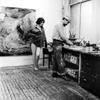Seven-Gallery 'Takeover' of Art by Women at MFA Boston Marks 100th Anniversary of U.S. Women's Suffrage Amendment
- BOSTON, Massachusetts
- /
- September 03, 2019
For centuries, women artists have struggled to receive recognition for their accomplishments. Despite more than a century of feminist activism and great strides towards social, professional and political equality, women remain dramatically underrepresented and undervalued in the art world today. In response, the Museum of Fine Arts, Boston (MFA), is reinstalling the entire third floor of its Art of the Americas Wing with approximately 200 artworks made by women over the last 100 years—a “takeover” that aims to challenge the dominant history of art from 1920 to 2020 and shine a light on some of the many talented and determined women artists who deserve attention.
Coinciding with the 100th anniversary of the ratification of the 19th Amendment, which gave women the right to vote, as well as the 150th anniversary of the MFA’s founding, this thematic exhibition seeks to acknowledge and remedy the systemic gender discrimination found in museums, galleries, the academy and the marketplace, including the MFA’s inconsistent history in supporting women artists. The exhibition also explores art and suffrage—emphasizing that both could give women a voice in their community and the world. At the same time, it recognizes that past feminist movements, including the campaign for the right to vote, were not inclusive or immune from systemic racism. By looking at 20th-century American art through the lens of modern-day feminism—which advocates for equity and intersectionality (the way an individual’s race, class, gender and other identities combine and overlap)—MFA curators hope to broaden the stories that are told during the yearlong commemoration of women’s suffrage in 2020.
Primarily drawn from the MFA’s collection, the works featured in Women Take the Floor include paintings, sculpture, prints, photographs, jewelry, textiles, ceramics and furniture. The central gallery, dedicated to portraits of women created by women, provides a large convening space where visitors are invited to share perspectives and participate in a wide range of programs scheduled to take place throughout the run of the exhibition. Women Take the Floor is on view from September 13, 2019 through May 3, 2021.
“Our goals are to celebrate the strength and diversity of work by women artists while also shining a light on the ongoing struggle that many continue to face today. We see these efforts of recognition and empowerment to mark a first step to redress the systematic discrimination against women at the MFA, and within the art world,” said Nonie Gadsden, Katharine Lane Weems Senior Curator of American Decorative Arts and Sculpture, who led a cross-departmental team of curators in organizing Women Take the Floor.
Gadsden coordinated a cross-departmental curatorial team for the exhibition, including Reto Thüring, Beal Family Chair, Department of Contemporary Art; Erica Hirshler, Croll Senior Curator of American Paintings; Lauren Whitley, Senior Curator of Textiles and Fashion Arts; Patrick Murphy, Lia and William Poorvu Assistant Curator of Prints and Drawings and Supervisor, Morse Study Room; Karen Haas, Lane Senior Curator of Photographs; and former MFA Curatorial Research Associates Caroline Kipp, Emelie Gevalt and Zoë Samels.
To ensure the exhibition represented a broad range of perspectives, the MFA convened a roundtable discussion with local women community leaders to inform interpretation and give feedback on the project, particularly on the Women Depicting Women gallery. As a result, outside voices are a key feature of the central space, and informed interpretation throughout the exhibition. Porsha Olayiwola, the current poet laureate for the city of Boston, will write a new poem and perform it on video, and the local feminist collective The Cauldron has identified quotes from feminist voices, which will be featured in the entry space.
The core space of the exhibition focuses on Women Depicting Women: Her Vision, Her Voice. The works on view range across time and place, as well as social, political and cultural contexts, yet all represent a highly individual interpretation of female portraiture. Highlights include celebrated paintings by Frida Kahlo, Alice Neel and Loïs Mailou Jones; photographs by Andrea Bowers, Maria Magdalena Campos-Pons, Laura McPhee and Cindy Sherman; and the recently acquired portrait of feminist activist Rosemary Mayer by Sylvia Sleigh.
In the decades following the campaign for women’s suffrage, a greater number of women successfully pursued careers as professional artists and designers. Yet the road was not easy—nor was it open to all. Women on the Move: Art and Design in the 1920s and 30s in the John Axelrod Gallery considers the contributions of pioneering artists like painters Georgia O’Keeffe and Loïs Mailou Jones and ceramicists Maria Martinez (San Ildefonso Pueblo) and Maija Grotell. At the same time, the gallery highlights works by important women artists who have garnered less recognition, including sculptor Meta Warrick Fuller, painter Helen Torr and potter Nampeyo (Hopi-Tewa).
No Man’s Land, on view in the Melvin Blake and Frank Purnell Gallery, is devoted to six artists who have each reimagined the representation of landscape, creating personal interpretations of the world around them. Working across decades, geographies and media, Luchita Hurtado, Doris Lindo Lewis, Loren MacIver, Georgia O’Keeffe, Beverly Pepper and Kay Sage explored the metaphoric possibilities of both real and imagined landscapes, often through the use of symbols that allude to female experiences.
Presented in the Saundra B. and William H. Lane Galleries, Beyond the Loom: Fiber as Sculpture highlights pioneering artists who radically redefined textiles as modern art in the 1960s and 1970s: Anni Albers, Olga de Amaral, Ruth Asawa, Sheila Hicks, Kay Sekimachi and Lenore Tawney. Co-opting a medium traditionally associated with women’s work and domesticity, they boldly broke free from the constraints of the loom to create large-scale, sculptural weavings that engaged with contemporary art movements such as Minimalism. A second rotation in the same space, Subversive Threads, will open late spring 2020, focusing on contemporary artists who have used textiles to challenge notions of identity, gender and politics.
Women of Action, on view in the Saundra B. and William H. Lane Galleries, builds on recent scholarship and recognizes the contributions of Joan Mitchell, Grace Hartigan, Helen Frankenthaler, Elaine de Kooning, Lee Krasner and ceramicist Toshiko Takaezu to the formation and expansion of action painting in the mid-20th century, a movement typically credited to their male counterparts.
Women Publish Women: The Print Boom celebrates three entrepreneurs who founded printmaking workshops in the late 1950s and 1960s and played an underappreciated role in the revitalization of American printmaking: Tatyana Grosman of Universal Limited Art Editions (New York), June Wayne of Tamarind Lithography (Los Angeles) and Kathan Brown of Crown Point Press (San Francisco). These will be presented in two rotations in the Robert and Jane Burke Gallery. The third rotation, Personal to Political: Women Photographers, 1965–1985, will feature work by more than 35 photographers active during these pivotal decades when women were making major inroads into the fields of photojournalism, fashion, social documentary and fine art photography.
Women and Abstraction at Midcentury takes an expansive look at abstraction, exploring how women artists reshaped the natural world for expressive purposes in a wide range of media including paintings, prints, textiles, ceramics, furniture and jewelry. Among the artists featured in this space are painters Carmen Herrera, Esphyr Slobodkina and Maud Morgan; designers Greta Magnusson-Grossman and Olga Lee; and Clare Falkenstein, Laura Andreson, Margaret de Patta and others who contributed to the development of the studio craft movement.
The exhibition will also include a space for reflection and feedback. In addition to a video of Olayiwola performing her newly commissioned poem, a curated bookshelf—including texts on feminist history and women artists—and a seating area will be available for visitors. Additionally, curators will select responses left by the public in an open feedback area to add to the in-gallery interpretation in Women Depicting Women—creating a dynamic “living label” that will grow throughout the installation’s 18-month run.
A selection of speeches will be available in conjunction with Amalia Pica’s Now Speak! (2011)—a cast concrete lectern that encourages visitors to make spontaneous declarations or deliver a performance of a historical speech. The “living artwork” will also serve as the centerpiece of various public programs taking place in the gallery.




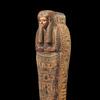
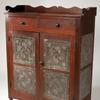


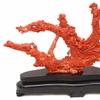
_Infinity_by_Santiago_Medina_PhotoCr100x100_c.jpg)
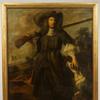

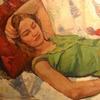

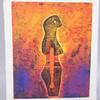
100x100_c.jpg)
